![]()
Figure 1. The Voxtorp Church Chest.1
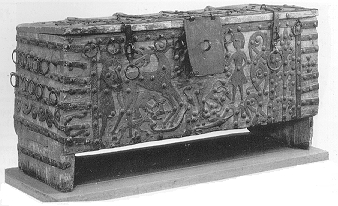
![]()
Introduction
|
Plans and Pictures of a Replica by Stephen Francis Wyley |
![]()
Figure 1. The Voxtorp Church Chest.1

![]()
Introduction
This article is set forth to aid the re-constructor in building a chest based on the Voxtorp Church Chest. The Voxtorp Church Chest is a rectangular sided chest made from pine with decorative ironwork, from Småland in Sweden, dating from c. 1200, the length of the chest is 146 cm, the width is 32 cm and the height is 90 cm. The chest is currently housed at the Statens Historiska Museum in Stockholm, Sweden (ref no. 4094). See Figure 1.
In the catalogue of the publication “From Viking to Crusader”2 Göran Tegnér (Statens Historiska Museum in Stockholm) ascribes the iron work on the chest to the style used to decorate other chests and church doors of the Middle Ages:
“In the Middle Ages church doors often had decorative ironwork, made by village smiths or in more specialized workshops. The chest from Voxtorp belongs to a groups of chests and doors with elaborate ironwork of high quality which may all have been made in the same workshop; they are preserved in east Småland and Östergotland (chests from Rydaholm, Ryssby and Voxtorp; doors from Roglösa and Voxtorp). The chest is made up of sides, ends, lid and bottom each consisting of a single plank. The pieces have been nailed together and the construction stabilized by strong iron bands decorated with a herring-bone pattern. Most of the front is covered with a hunting scene: to the left a bearded man dressed in a mitre-like head-dress grasps the tail of a deer. A snake is by the deer’s forelegs and between its legs are a dog and a hawk killing a small quadruped. Another man stands on the right, a small winged dragon at his feet. There are various interpretations of these scenes, all relating to medieval legends with hunting motifs: Giles, Eustace, Hubert or Didrik of Bern (Theodoric the Great) - who is represented here is not know. Other products of the workshop have similar motifs.”
I have provided a set of diagrams and dimensional key as plans for the construction, along with pictures of a replica. See diagrams 1, 2 & 3, the dimensional key, and figures 2, 3 and 4. The chest in question represents the woodwork in Scandinavia at the end of the Viking period where the Christian religion was firmly in trenched and the skill used for making household goods were used to make items for use in the Christian buildings of the day. The chest design no longer shows the sloping ends and sides of the Viking period but has taken on the rectangular prism shape however it still has the tongue and groove joint exhibited in all the extant Viking chests. See Figure 2 for an European comparison.
![]()
Notes on Construction.
I strongly recommend that when taking any replication of a period piece that a scale model be made first, this saves a lot of stress and wasted materials later.
Refer to my article on the construction of the Mastermyr Chest. Make sure you put the bottom into the ends before you put the sides on.
Diagram 1. Front of the Voxtorp Church Chest.
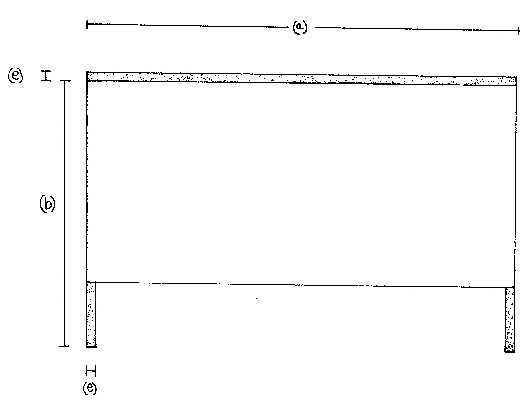
Diagram 2. End of the Voxtorp Church Chest.
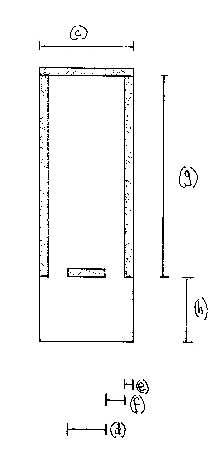
Diagram 3. Bottom of the Voxtorp Church Chest.

(a) 146 cm
(b) 90 cm
(c) 32 cm
(d) 12 cm
(e) 3 cm
(f) 7 cm
(g) 68 cm
(h) 22 cm
(i) 26 cm
![]()
Figure 2. End view of replica.
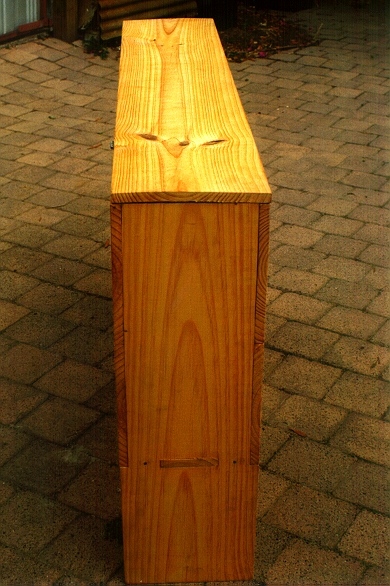
Figure 3. Side view of replica.
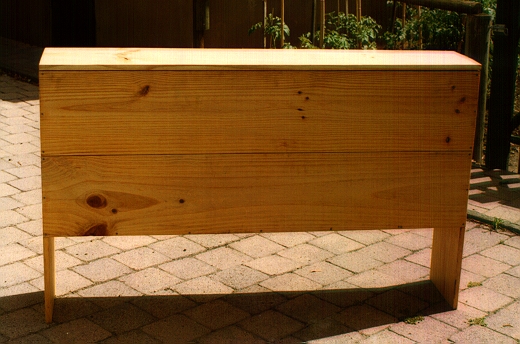
Figure 4. Comparison of cardboard model to full size replica.

![]()
Figure 5. A 13th century chest from the Castle Coburg, Germany.3
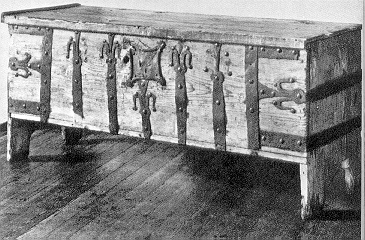
![]()
References
1. Roesdahl, E. & Wilson, D.M., Eds., From Viking to Crusader, The Scandinavians and Europe 800 -1200, Sweden, 1992, p. 348, Catalogue number 458.
2. Roesdahl, E. & Wilson, D.M., Eds., From Viking to Crusader, The Scandinavians and Europe 800 -1200, Sweden, 1992, p. 348, Catalogue number 458.
3. Anderson, W., The Castles of Europe, Hertfordshire, 1984, p. 99, fig. 115.
.
Bibliography
Almgren, B., et al, The Viking, New York, 1991.
Anderson, W., The Castles of Europe, Hertfordshire, 1984.
Arwidsson, G. & Berg, G., The Mästermyr Find, A Viking Age Tool Chest from Gotland, Stockholm, 1983.
Birkebaek, F., Denmarkshitorien - Vikingetiden Vol. 2 - ‘Og gjorde Danerna Kristne’, Forlaget Sesam, Copenhagen, 1983.
Graham-Campbell, J., The Viking World, London, 1980.
Graham-Campbell, J. & Kidd, D., The Vikings, London, 1980.
Iversen, M., Mammen, Grav, kunst og samfund i vikingetid, Jysk Arkæologisk Selskabs Skrifter XXVII, 1991.
Roesdahl, E. & Wilson, D.M., Eds., From Viking to Crusader, The Scandinavians and Europe 800 -1200, Sweden, 1992.
Wilson, D., Ed., The Northern World, London, 1980.
Wyley, S.F., The ‘Lund’ Viking Stool. A Method of Replication, 1997.
Wyley, S.F., The Mastermyr Viking Tool Chest. A Method of Replication, 1998.
Wyley, S.F., A Viking Table. A Method of Replication, 1998.
![]()
Further Reading
Andersson, A. 1968, 371: L'Art Scandinave 2. La Pierre-qui-Vire (English ed." Andersson, 1970a).
Karlsson, L. 1988: Medieval Ironwork in Sweden. Kgl. Vitterhets Historie och Antikvitets Akademien, Stockholm.
| Copyright © Stephen Francis Wyley 1999 -
2004
svenskildbiter@lycos.com |